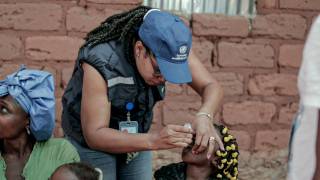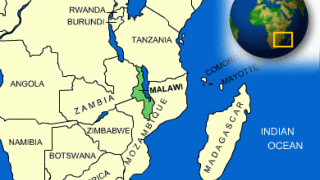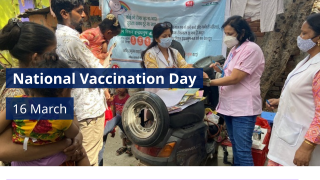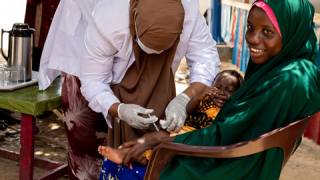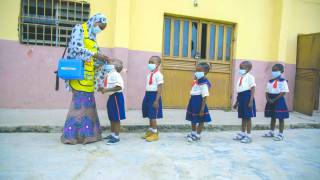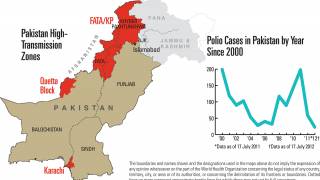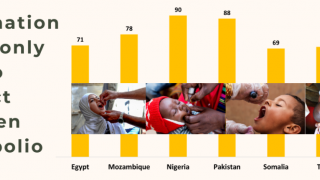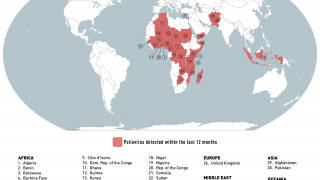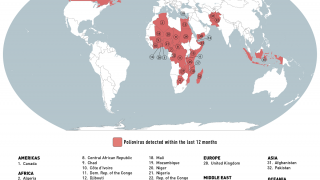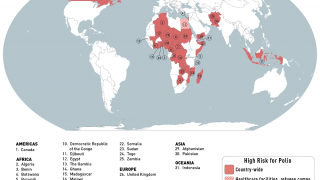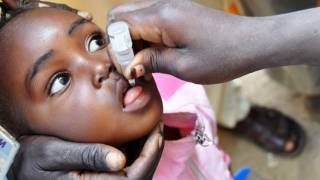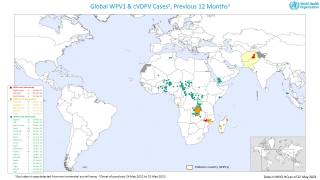Pakistan’s Wild Polio Problem Found in the Water

Throughout 2019, cases of wild polio have increased relative to 2018, and outbreaks of vaccine-derived polio continue to spread across Africa and Asia.
Poliomyelitis is a crippling infectious disease caused by a virus that spreads from person to person, invading the brain and spinal cord, which can lead to paralysis.
If a population is seriously under-immunized, vaccine-derived poliovirus can begin to circulate in a community.
Such as in Pakistan.
According to the Global Polio Eradication Initiative (GPEI) report published on November 14, 2019, Pakistan vaccinated about 6 million children this year.
But, during early November, 2 wild poliovirus type 1 (WPV1) cases were confirmed, increasing Pakistan's 2019 total to 82 cases, which is a significant increase from 12 totals cases last year.
Of the WPV1 cases with onset during January 2018–September 2019, (73%) were from the Khyber Pakhtunkhwa, (11%) from Balochistan, (11%) from Sindh, and (6%) from Punjab provinces.
In addition, the US Centers for Disease Control and Prevention (CDC) MMWR report published on November 15, 2019, said ‘the sharp rise of polio activity in Pakistan is due to a combination of factors.’
The Pakistan polio eradication program has undertaken a series of management, community engagement, and epidemiologic reviews that have identified various gaps needing urgent attention.
Gaps such as the spread of false information, particularly through social media (vaccine contains pork products) have increased community resistance to vaccination programs.
Moreover, the CDC noted in this report that ‘WPV1 has been widely detected in 51 sewage samples.’ Not only in the major water reservoir areas in 3 provinces but also among other districts and provinces across Pakistan.
Approximately 45 percent of all environmental sites tested were positive for WPV1 in 2019, compared with just 15 percent during the same period in 2018.
This data indicates the WPV1 is now found in the environment and Pakistani children are at serious risk.
While starting to address these issues, the Pakistan polio vaccination program has suspended supplementary immunization activities (SIA) in core reservoirs until December 2019, reports the CDC.
The CDC says the current status of polio eradication in Pakistan has serious global implications, with the increased risk for WPV1 spreading beyond Pakistan’s borders is high.
Stopping WPV1 transmission in Pakistan will also require continuing cross-border coordination with Afghanistan. During September 2019, cross-border teams vaccinated 164,692 children, says the GPEI.
The Pakistan polio eradication program has grown complex in its management and the operational organization says the CDC.
A management review in Karachi revealed overlapping terms of reference, delayed availability of information, systematic gaps in managerial oversight of decisions and activities, and an overall failure in staff members’ accountability when implementing SIAs (McKinsey and Company, unpublished report, 2019).
This review concluded that meeting programmatic challenges might require managerial restructuring so that decision-making, oversight, and future implementations occur as “One Team.”
‘The goal of interrupting WPV1 transmission in Pakistan is achievable but will require the full and rapid implementation of Technical Advisory Group recommendations to improve program management and operational effectiveness’ concluded this CDC report.
One suggestion to stop these WPV1 outbreaks would be to discontinue administering the live oral vaccine and switch to the not-live, injectable vaccine, currently used in the USA.
The inactivated polio vaccine (IPV) is the only polio vaccine that has been given in the USA since 2000. IPV is given by a shot in the leg or arm, at 4 different times, depending on the patient’s age. The CDC recommends that all travelers to polio-affected areas, such as Pakistan, be fully vaccinated against polio with an IPV.
Even if you were vaccinated as a child or have been sick with polio before, you may need a polio vaccine booster dose to make sure you are protected, says the CDC.
Therefore, the strategy to eradicate polio is based on prevention by immunizing children to stop the transmission and make the world polio-free.
The World Health Organization (WHO) did announce some good news in October 2019 when another strain of polio, WPV3 was deemed eradicated, leaving just one strain left to eliminate, the WPV1.
In the USA, there are various polio vaccines available, such as Kinrix and Pediarix. IPV vaccination has not been known to cause serious problems, but side effects are a potential risk, says the CDC.
Furthermore, if you will be in Pakistan for more than 4 weeks, the government of Pakistan may require you to show proof of polio vaccination when you are exiting the country.
To meet this requirement, you should receive a polio vaccine between 4 weeks and 12 months before the date you are leaving Pakistan.
Once vaccinated, your doctor should provide you with an International Certificate of Vaccination or Prophylaxis yellow card. This will serve as your official documentation of vaccination against polio.
In addition to polio warnings, the CDC has issued Dengue, Measles, and Typhoid Travel Alerts for Pakistan in 2019.
Prior to traveling abroad, vaccine counseling appointments can be scheduled with a travel specialist at Vax-Before-Travel.
The Global Polio Eradication Initiative is a public-private partnership led by national governments with five core partners - the World Health Organization (WHO), Rotary International, the US CDC, the United Nations Children’s Fund (UNICEF) and the Bill & Melinda Gates Foundation. Its goal is to eradicate polio worldwide
Polio vaccine news published by Vax-Before-Travel.
Our Trust Standards: Medical Advisory Committee
- CDC: Polio
- Polio this week as of 13 November 2019
- CDC: Update on Vaccine-Derived Poliovirus Outbreaks — Worldwide, January 2018–June 2019
- CDC: Progress Toward Poliomyelitis Eradication — Pakistan, January 2018–September 2019
- CDC: Health Information for Travelers to Pakistan
- UK to Fund Vaccinating 750 Children Per Minute Against Polio







